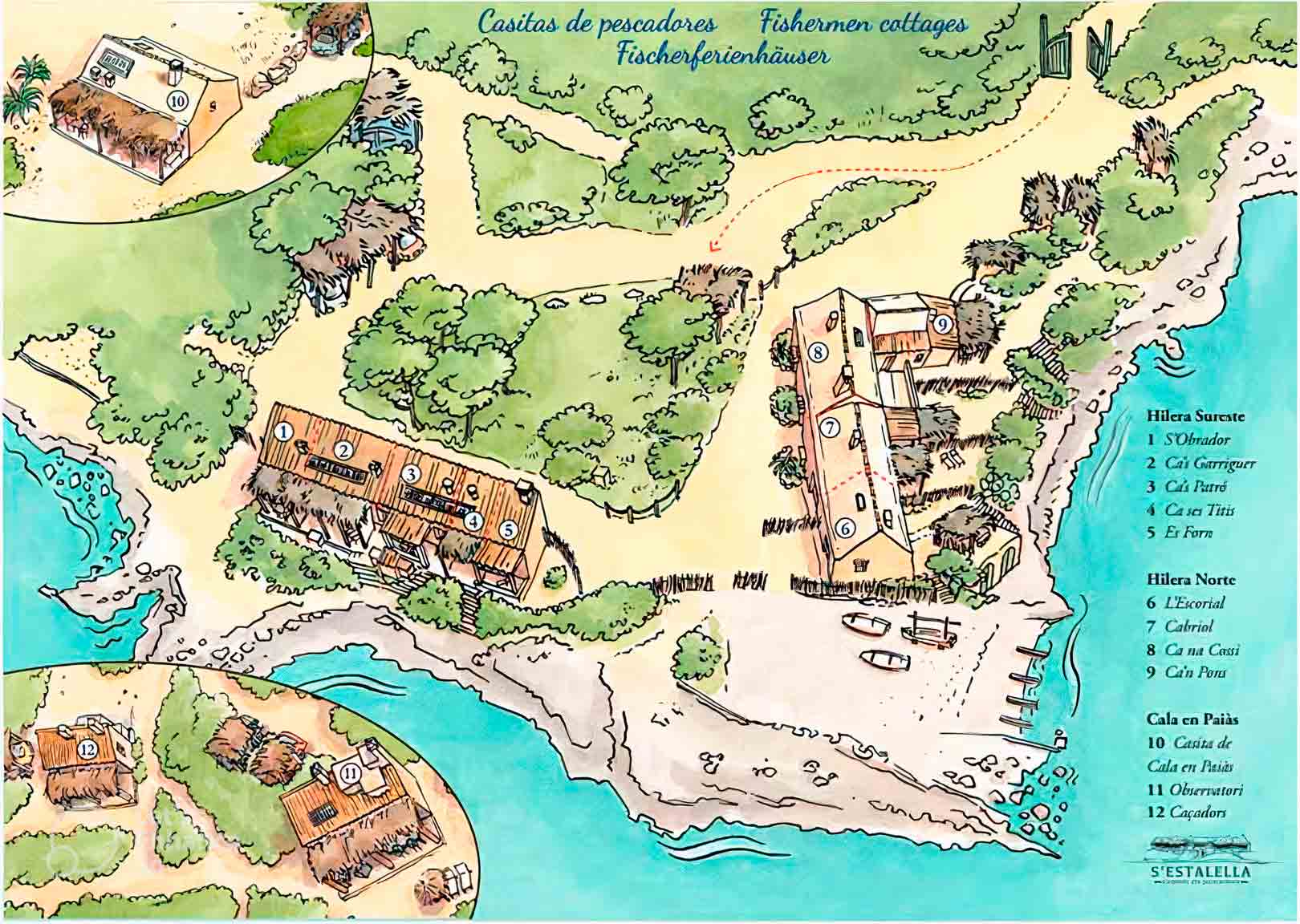Fishing Village
Fishing Village

As a result of the construction of s’Estalella tower in 1577, a few fishermen and lighthouse keepers settled in the area. But it was not until the nineteenth century that there is evidence that the landowners of S’Estalella (from “Ca’n Jaqueta”, as they were known) allowed the fishermen who wished to, to build there barrack huts.
Those inhabitants were mostly fishermen, although they could also work as sharecroppers, seaweed collectors or smugglers, extremely hard jobs. Fish and salt collected from the holes in the rocks called “cocons” were exchanged for staple products (wheat, meat, fruit, etc.) with the owners of the nearby properties.
During the fourteenth to eighteenth centuries, the south coast of Majorca was under continuous threat of barbarian privateer expeditions. Camalls, Cartogol and Barbarrossa didn’t allow any rest to the defenders of the southern coast of the island. S’Estalella towers, Cap Blanc, Cap Enderrocat and Cala Pi are witnesses of those fights.
The earliest written record of s’Estalella was provided by the Archduke Louis Salvador of Austria and dates from 1884. It states as follows:
“And so we arrive to Punta de S’Estanyol and its namesake island, area that includes the presence of seven barrack huts, three of them white-washed, and two barracks for boots next to a large dry dock …”.
In the early twentieth century, the City Council of Llucmajor created the urban core of S’Estanyol de Migjorn, and the local fishermen left the town of S’Estalella. Since then, the owner family has preserved the village and the dry docks, thus avoiding its abandonment.
Those inhabitants were mostly fishermen, although they could also work as sharecroppers, seaweed collectors or smugglers, extremely hard jobs. Fish and salt collected from the holes in the rocks called “cocons” were exchanged for staple products (wheat, meat, fruit, etc.) with the owners of the nearby properties.
During the fourteenth to eighteenth centuries, the south coast of Majorca was under continuous threat of barbarian privateer expeditions. Camalls, Cartogol and Barbarrossa didn’t allow any rest to the defenders of the southern coast of the island. S’Estalella towers, Cap Blanc, Cap Enderrocat and Cala Pi are witnesses of those fights.
The earliest written record of s’Estalella was provided by the Archduke Louis Salvador of Austria and dates from 1884. It states as follows:
“And so we arrive to Punta de S’Estanyol and its namesake island, area that includes the presence of seven barrack huts, three of them white-washed, and two barracks for boots next to a large dry dock …”.
In the early twentieth century, the City Council of Llucmajor created the urban core of S’Estanyol de Migjorn, and the local fishermen left the town of S’Estalella. Since then, the owner family has preserved the village and the dry docks, thus avoiding its abandonment.
